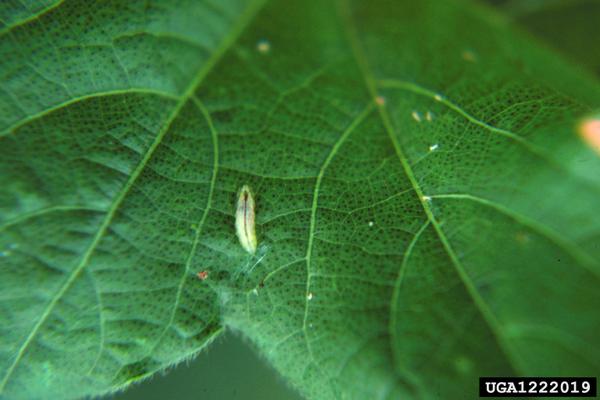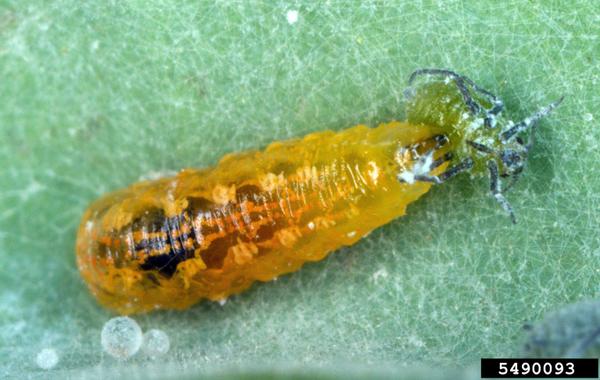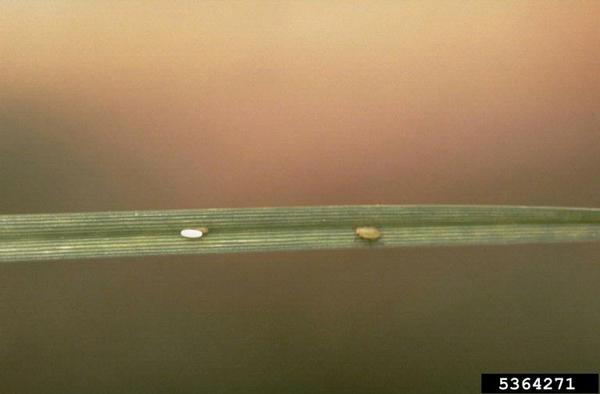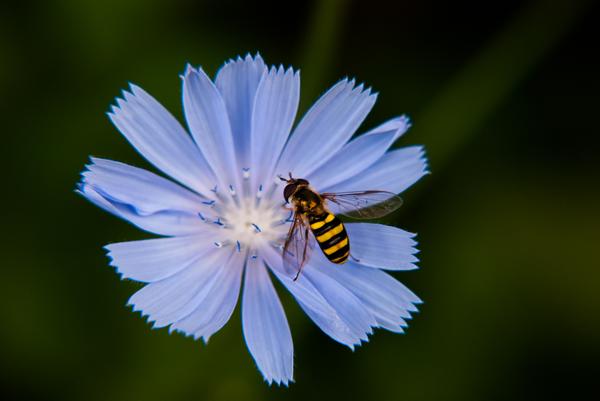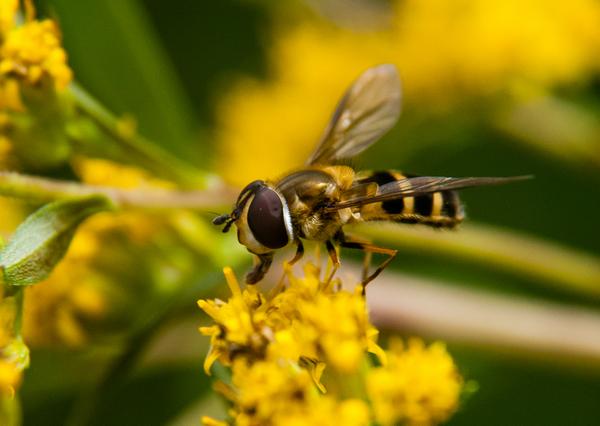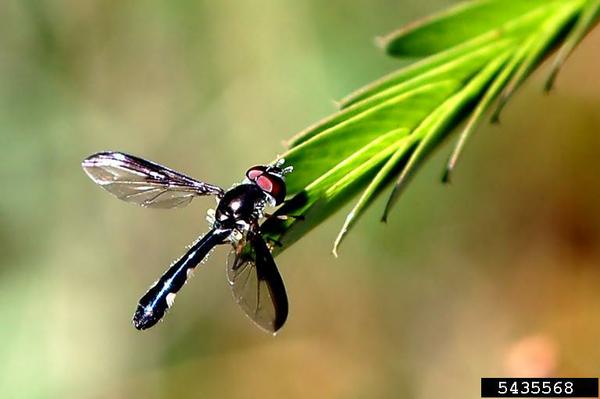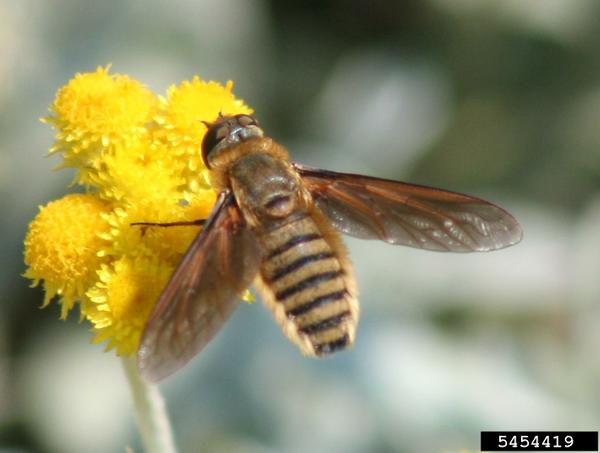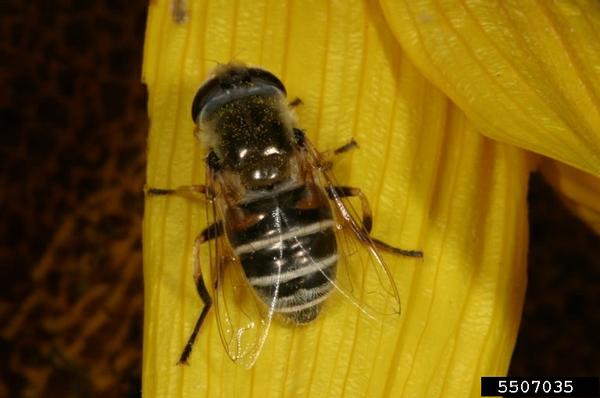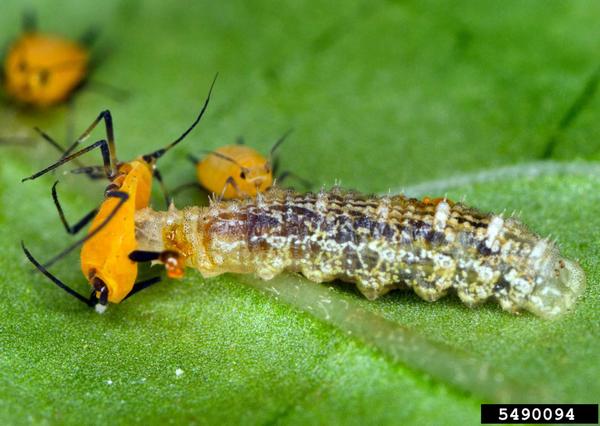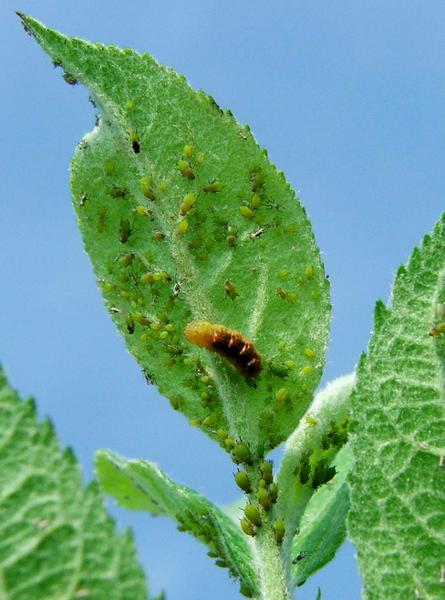Background and Description
Syrphid fly (or "hover fly") adults are small yellow and black flies of varying appearance less than 1/2 inch (12.5mm) long. Many are bee mimics and are often mistaken for "sweat bees" because of their habit of hovering around a person's face and arms. Larvae are roughly the same length as adults and may be yellow, green, white, or brown. Eggs are white, faintly ridged, approximately 1/25 inch (1mm) long, and resemble tiny grains of rice.
Life history
Some syrphid fly species overwinter as adults, though most overwinter as larvae in leaf litter. Adults emerge in early summer and feed on nectar and the honeydew from aphids. Females lay hundreds of eggs on leaves near soft-bodied insect prey, usually aphid colonies. Larvae are blind and have no legs, but easily locate prey by "casting" their front ends from side to side. After 7 to 10 days they will pupate, often after dropping to the ground. There are several generations per year.
Predation
Syrphid fly adults are not predators, feeding only on pollen, nectar, and aphid honeydew. Larvae, however, are highly effective predators of green apple and spirea aphids, with each larva capable of consuming hundreds of aphids during the course of its development. After locating prey, larvae pierce them and suck them dry. They are often more effective than other predatory insects in cooler weather.
Publication date: Feb. 23, 2015
N.C. Cooperative Extension prohibits discrimination and harassment regardless of age, color, disability, family and marital status, gender identity, national origin, political beliefs, race, religion, sex (including pregnancy), sexual orientation and veteran status.

